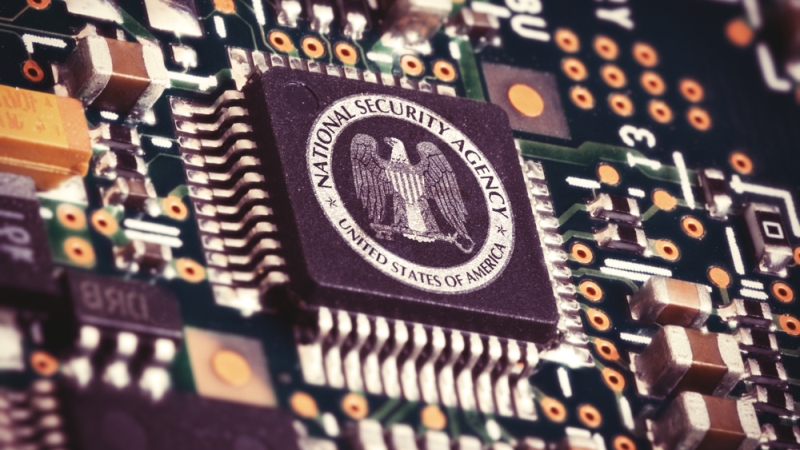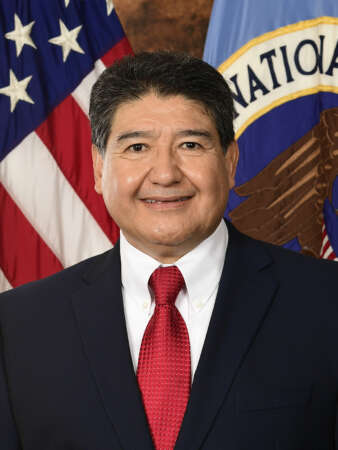
The U.S. government is continuing to invest in the advancement and implementation of critical and emerging technologies – such as artificial intelligence (AI) and quantum sciences – because they are key to both enabling economic prosperity and defending national security.

However, in an exclusive interview with MeriTalk, Gil Herrera, director of research at the National Security Agency (NSA), explained that because there is a duality to emerging technologies the complexity that they pose requires a balanced approach for development and deployment across the Federal government and beyond.
AI: Friend or Foe?
According to Herrera, AI has been around for a long time — arguably back to the late 1950s. But about 18 months ago something happened which changed the very fabric of AI understanding for many experts.
Enter ChatGPT.
“That was a fundamental change in AI, because what that represented was an AI system with emergent properties. It could talk with you, and it was hard to distinguish it from a person. It could do things that you normally associate with human behavior,” Herrera said.
He explained that AI in its current form is a real force multiplier for many applications, especially for the kinds of applications that NSA is interested in such as augmenting human analysis, analyzing legacy data to discover new insights, and improving the speed of decisions.
“Now you can get emergent properties that one normally expects from a human and not from prior machine learning algorithms,” Herrera said.
But those advantages are also concerning.
With the release of open-source AI models anybody with a home laptop computer — not just adversaries with large computational platforms — can do incredible things, either for good or bad aims and outcomes.
Another concern is that while there is a high cost of entry to make generative, pretrained, large language models (LLM), there is a very low cost of entry to use them. Now, just about anybody can find either good or bad ways to use the new generative, pre-trained LLMs, Herrera explained.
“One of the big concerns I have about the use of open source LLMs by nefarious actors is their use to improve cybersecurity attacks. Attackers could use LLMs to improve the written quality of phishing messages, and for code writing to develop novel cyber-attacks,” Herrera said.
“[AI] is advancing a new frontier in information security. And that is both good and bad,” he said. “AI can help expedite finding vulnerabilities in malware or in code because it can operate so much quicker … But on the offensive side, it greatly enhances the ability for people to produce cyberattacks.”
Herrera also acknowledged that AI experts have implemented safeguards into these LLMs, “but it’s been demonstrated people — with enough time and effort — even with a gaming laptop can overcome many of the safeguards,” he said.
Because of the duality of AI, the Federal government at large needs to adopt a balanced approach for development and deployment of this emerging tech to ensure that it does not pose a threat to national security.
And NSA is doing its part toward that goal.
Last year the intelligence agency created a new entity to promote the secure development and integration of AI capabilities within U.S. national security systems, the Artificial Intelligence Security Center (AISC). According to Herrera, NSA’s AISC provides US National Security Systems and the Defense Industrial Base with the support and expertise needed to ensure that their AI programs and models are secure.
“Our AI Security Center also stands ready to help AI companies to make sure that their own AI programs and models are secure. And we run that through our Cyber Collaboration Center, which has experience in helping industry secure their networks,” Herrera said.
Challenges in Advancing Quantum Computing
In the early 2000s, the excitement about the potential of quantum computing was felt across academia, industry, and government. In 2004, the Advanced Research and Development Activity (ARDA) — an agency within the intelligence community that conducts advanced research and development — in partnership with several other government agencies organized a workshop that included the top academic and industrial experts in the field. The result of the workshop was a 268-page report that included roadmaps for the top 8 quantum computing approaches.
But fast-forward to today and some of that excitement has diminished.
“If any of the 8 roadmap goals that were predicted to be achieved by 2012 had been achieved, it would have exceeded the world’s best quantum computer today by some margin,” Herrera said. When the reality sank in that exploiting quantum mechanics to create a computer was exceptionally difficult, “the hype just wasn’t followed up with results,” he said.
“That said, I’m still excited about the field. NSA funds a substantial amount of academic research in quantum computing.” When asked to compare AI and quantum computing, Herrera said “Both fields hold huge promise and they’re both very exciting, but people can see firsthand progress in AI and personally experience incredible results, but with quantum it’s still just not quite there yet,” he said.
He emphasized that while there hasn’t been as much useful advancement in quantum computing capabilities, there continues to be significant advances in quantum computing research in both academia and in industry. “NSA is proud of the role we have played in the development of the field of quantum computing.”
When asked about the broader research portfolio at NSA, Herrera replied that “NSA has a strong internal research program. We conduct research in mathematics, cybersecurity, and advanced and future computing, including quantum computing. We conduct research on the engineering of modern communication systems, and computing research in the science of analysis, including AI and data science research,” giving credit to the capable minds on the teams that undertake the research.
“We’re always looking for good employees who want to have a great job and work on meaningful problems that are important to the nation working with top researchers in their respective fields,” he said.
